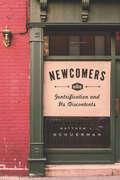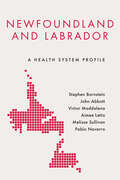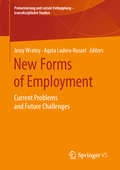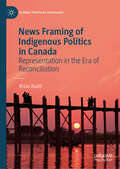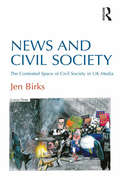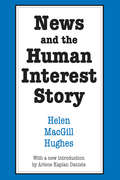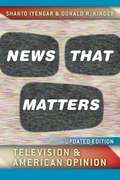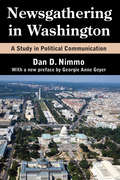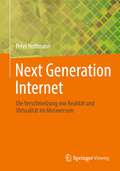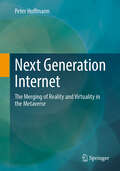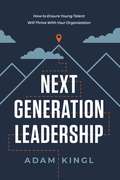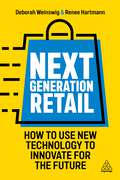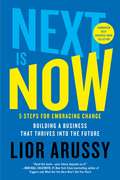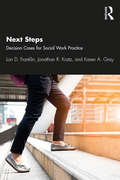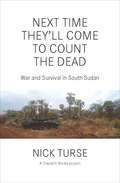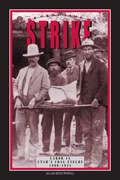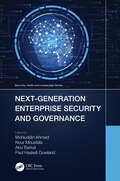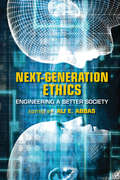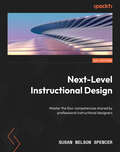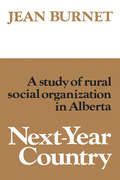- Table View
- List View
Newcomers: Gentrification and Its Discontents
by Matthew L. SchuermanGentrification is transforming cities, small and large, across the country. Though it’s easy to bemoan the diminished social diversity and transformation of commercial strips that often signify a gentrifying neighborhood, determining who actually benefits and who suffers from this nebulous process can be much harder. The full story of gentrification is rooted in large-scale social and economic forces as well as in extremely local specifics—in short, it’s far more complicated than both its supporters and detractors allow. In Newcomers, journalist Matthew L. Schuerman explains how a phenomenon that began with good intentions has turned into one of the most vexing social problems of our time. He builds a national story using focused histories of northwest Brooklyn, San Francisco’s Mission District, and the onetime site of Chicago’s Cabrini-Green housing project, revealing both the commonalities among all three and the place-specific drivers of change. Schuerman argues that gentrification has become a too-easy flashpoint for all kinds of quasi-populist rage and pro-growth boosterism. In Newcomers, he doesn’t condemn gentrifiers as a whole, but rather articulates what it is they actually do, showing not only how community development can turn foul, but also instances when a “better” neighborhood truly results from changes that are good. Schuerman draws no easy conclusions, using his keen reportorial eye to create sharp, but fair, portraits of the people caught up in gentrification, the people who cause it, and its effects on the lives of everyone who calls a city home.
Newer Islamic Movements in Western Europe (Routledge Revivals)
by Lars PedersonPublished in 1999, this book analyses the development of the recent cultural trend represented by the newer Islamic movements among Muslim immigrants in Western Europe. Included is a comprehensive description of the institutionalisation and organisation of Islam in Western Europe and an investigation of the organisation, activities, visions and strategies of the European and Islamic movements. Particular attention is paid to the most important Islamist trend among the Turkish minorities, Milli Gorus. The empirical data is original and has been primarily collected through interviews with leaders of Islamic organisations in Denmark, Berlin and Paris. The Islamistic stress on the validity of Islam as constituting the basis of particular social and cultural interest is analysed in the perspective of the concepts of ‘life world’ and ‘system world’ presented by Jurgen Habermas. The investigation demonstrates the existence of locally organised communities, whose social and cultural interests are in need of representation. It is shown that Islamism constitutes a clear and concrete point of departure from a positive identification in the Muslim immigrant societies. This critical relevance of Islamism is discussed in the light of the social and economic marginalisation characterising the situation of the immigrated Muslim minorities in Western Europe. The main conclusion is that Islamism is a collective political representation of an alternative position to the dominant cultural and social marginalisation.
Newfoundland and Labrador: A Health System Profile (Provincial and Territorial Health System Profiles)
by John Abbott Stephen Bornstein Victor Maddalena Aimee Letto Melissa Sullivan Pablo NavarroThere is not, and has never been, a single Canadian health system. Part of a series on the health systems of Canada’s provinces and territories, Newfoundland and Labrador: A Health System Profile provides a critical analysis of how the single-payer health care system has been implemented in the country’s youngest province. Examining the way the province’s health services are organized, funded, and delivered, the authors focus on the challenges involved in providing effective health care in a setting characterized by a large, decentralized territory; a small population, much of which is widely distributed in a large number of rural communities and small towns; and comparatively limited fiscal capacity and health human resources. Drawing on maps, figures, and collected data, this book documents the hesitant and limited ways in which Newfoundland and Labrador has sought to deal with the challenges and difficulties that the system has experienced in responding to recent changes in demography, economics, and medical technology.
News Forms of Employment: Current Problems and Future Challenges (Prekarisierung und soziale Entkopplung – transdisziplinäre Studien)
by Jerzy Wratny Agata Ludera-RuszelThis volume is the first collection of original research brought together under the name of new forms of employment. The contributions written specifically for this project – an intruduction, conclusion, and chapters – propose to critically investigate the current state of this burgeoning and relevant research field and map out future directions. The diverse selection of research oriented on new forms of employment across the World included in this volume provides readers with a variety of topics, disciplinary angles, critical approaches and practices, methods and interpretations, emphases and voices, which, when taken together, illustrate the diversity and complexity of this dynamic and stimulating field, as well as the hightened attention to labour and employment law issues and proliferation of labour and employment law-oriented scholars. The Content· Changing patterns of work: implications for employment relationship· New forms of employment in a digital age· The protection of workers in new forms of employment· New forms of employment and challenges for the protection of collective labour rights of employeesThe EditorsJerzy Wratny a full professor of labour law, associated with the Institute of Law Studies of the Polish Academy of Sciences, Poland.Agata Ludera-Ruszel a Ph.D. in labour law, an assistant professor in Department of Labour Law and Social Policy at the Institute of Law of the University of Rzeszow, Poland.
News Framing of Indigenous Politics in Canada: Representation in the Era of Reconciliation (Global Political Sociology)
by Brian BuddThis book explores the news media’s coverage of Indigenous-settler reconciliation following the conclusion of the Truth and Reconciliation Commission of Canada (TRC). Using a comparative case study research design, the book examines news coverage of three significant Indigenous rights issues and events during the post-TRC era. The findings presented demonstrate that in the post-TRC era, the Canadian news media continue to produce systemic patterns in coverage which reject, marginalize and erase the territorial rights and claims of Indigenous Peoples. The author concludes that rather than helping to move the relationship between Indigenous Peoples and settlers forward along a path of reconciliation, power-sharing, and the resurgence of land-based self-determination, the news media are continuing to construct discourses and representations that work against the political objectives of Indigenous Peoples and reinforce settler colonial power relationships in Canada.
News and Civil Society: The Contested Space of Civil Society in UK Media
by Jen BirksCivil Society has not been more relevant as a concept and a practice since the fall of communism in Eastern Europe. Global events from Tahir Square to Wall St have brought a new relevance and urgency to questions about the boundaries of legitimate dissent and public order policing, the meaning of tolerance in the context of conflicting rights claims, and how we can agree on the shared values of the ’good society’. This timely book examines the representation of civil society in news media, exploring the popular understanding of this contested space in relation to conflicting legitimating frames: as the neo-liberal Big Society, activist political participation, or postmodern apolitical tolerance. With close reference to prominent news stories, including the UK state visit of Pope Benedict XVI, anti-austerity protests and industrial action, police infiltration of the environmental movement, and the Occupy camp at St Paul’s Cathedral in London, News and Civil Society scrutinises different facets of contemporary civil society, civility and civic virtue. A cross-disciplinary engagement with questions of national identity and pluralism, civil liberties and dissent, power and accountability, this book will appeal to those with interests in media, journalism, sociology, citizenship and political studies.
News and the Human Interest Story
by Helen MacGill HughesIn this account of the growth of newspapers in modern, industrial society, Helen Hughes traces the development of a mass audience through analysis of the origins of the human interest story in the popular ballads of an earlier day. She shows how such commonly found interests as a taste for news of the town, ordinary gossip, and moving or gripping tales with a legendary or mythic quality have reflected the tastes of ordinary folk from the days of illiterate audiences to the present. She explains how these interests ultimately were combined with practical economic and political information to create the substance and demand for a popular press.In describing the rise and fall of newspaper empires, each with their special readership attractions, Hughes shows how technological innovation and idiosyncratic creativity were used by owners to capture and hold a reading audience. Once this audience developed, it could be fed a variety of messages—beamed at reinforcing and maintaining both general and specific publics—as well as a view of the world consonant with that of the publisher and major advertisers. Hughes offers a persuasive argument for the continuing viability of this method for combined social control, instruction, and amusement captured by the association of news and the human interest story.
News of a Kidnapping
by Gabriel García MárquezStory of the 1990 kidnapping of 10 Colombians by narcotraffickers.
News that Matters: Television and American Opinion, Updated Edition
by Shanto Iyengar Donald R. KinderAlmost twenty-five years ago, Shanto Iyengar and Donald R. Kinder first documented a series of sophisticated and innovative experiments that unobtrusively altered the order and emphasis of news stories in selected television broadcasts. Their resulting book News That Matters, now hailed as a classic by scholars of political science and public opinion alike, is here updated for the twenty-first century, with a new preface and epilogue by the authors. Backed by careful analysis of public opinion surveys, the authors show how, despite changing American politics, those issues that receive extended coverage in the national news become more important to viewers, while those that are ignored lose credibility. Moreover, those issues that are prominent in the news stream continue to loom more heavily as criteria for evaluating the president and for choosing between political candidates. “News That Matters does matter, because it demonstrates conclusively that television newscasts powerfully affect opinion. . . . All that follows, whether it supports, modifies, or challenges their conclusions, will have to begin here. ”—The Public Interest
Newsgathering in Washington: A Study in Political Communication
by Georgie Anne Geyer Dan NimmoIn the early twentieth century, Pulitzer Prize-winning journalist Walter Lippmann said that the presentation of truthful news lies at the heart of democracy. This volume strong strong stems from Dan D. Nimmo's conviction that opinion and policymaking are also significant, interrelated processes within any political system. A democracy poses problematic questions of the manner and means by which political ideas, opinions, and issues are transmitted throughout the body politic. In the United States, such communication is carried on primarily through the news media. Reporters and their sources interact to form crucial relationships linking citizen and official. Nimmo focuses on that interaction, using personal interviews with selected samples of Washington correspondents and their official news sources as his evidence. Nimmo's research examines the relationships that develop between news sources and reporters as each engages in political communication, indicates the factors most influential in determining such relationships, and suggests the implications such findings have for interpreting the tension that characterizes government-press relations in a democracy such as the United States. In this era of heightened attention to the role of the media in political discourse, reissuance of this volume could not be timelier. This study features a new preface by Daniel Pearl Award winner Georgie Anne Geyer. It should be read by all media specialists, communication scholars, and journalists, and will be valuable for those entering these fields as well.
Next Generation Internet: Die Verschmelzung von Realität und Virtualität im Metaversum
by Peter HoffmannDie Entwicklung des Internets, insbesondere des WWW, stößt aktuell an ihre Grenzen – sowohl technisch als auch sozio-kulturell und ökonomisch. Als Lösung wird ein neues Internet versprochen, das die Grenzen der realen und der virtuellen Welt überwinden und Realität und Digitalität verschmelzen soll – das Metaversum. Technische, semantische und organisatorische Details greifen hierzu eng ineinander. Was aber bedeutet dies bei genauerer Betrachtung? Welche technisch-technologischen Herausforderungen müssen bewältigt werden, um ein solches Verschmelzen zu erreichen? Welche ökonomischen Möglichkeiten eröffnen sich– und welche verbieten sich möglicherweise? Wie kann erreicht werden, dass ein offenes und für jeden benutzbares Metaversum entsteht? Und wie kann vermieden werden, dass auch in diesem neuen Metaversum wenige große Anbieter ihre proprietären Ideen durchsetzen? Für diese Fragen soll dieses Buch Antworten aufzeigen.
Next Generation Internet: The Merging of Reality and Virtuality in the Metaverse
by Peter HoffmannThe development of the internet, particularly the World Wide Web, is currently hitting its limits—both technically and socio-culturally, as well as economically. A new internet is promised as a solution, one that aims to overcome the boundaries between the real and the virtual world, merging reality and digitality—the metaverse. Technical, semantic, and organizational details are closely intertwined in this context. But what does this mean upon closer examination? What technical and technological challenges must be overcome to achieve such a merging? What economic opportunities arise—and which ones may be precluded? How can we ensure that an open and universally accessible metaverse is created? And how can we prevent a few large providers from imposing their proprietary ideas in this new metaverse? This book aims to provide answers to these questions.
Next Generation Leadership: How to Ensure Young Talent Will Thrive with Your Organization
by Adam KinglEmployers who refuse to adapt to the expectations of younger generations are losing out on top talent, as they leave for positions at companies with more modern practices. Learn what companies need to do to fit into the new normal in the workplace.Generation Y sees the world differently than any other generation in modern memory. And nowhere is this more evident than in the workplace. The astronomical shifts that this generation has seen in the economy, technology, and the world have changed what they want from life and work--which is not a 9-5 existence for forty-plus years, leading to a typical retirement at sixty-five. What older generations call a poor work ethic from a spoiled generation, Gen Y sees as a different way of doing things. Companies that don&’t get on board risk losing the diverse, young talent that is critical for them to be able to compete.Companies that take the time to listen realize that what Gen Y is asking for isn&’t that crazy; in fact, it&’s better in many ways.A demand for work-life balance isn&’t a cry for fewer work hours--it&’s a cry to be able to work from outside the office beyond a rigid 9-5 schedule (which can lead, ironically, to Gen Y employees working even more hours than you expected).Leaving a job after a couple years isn&’t an inability to commit--it&’s a need to learn more, expand their experience, and develop their career at a faster pace, something that is helpful to companies that hire those individuals, including your own.Elevating nontraditional benefits over financial benefits is a step toward creating an emotional connection to the company where employees spend the majority of their time and invest significant mental and emotional efforts.The need to work for a company with a purpose is a reflection of the power that social media has had on the social consciousness.This book will explore what&’s behind these shifts in the character of the emerging workforce. It shows that, as Gen Y assumes managerial positions, the nature of leadership and business will change over the next few decades in irrevocable and profound ways.
Next Generation Retail: How to Use New Technology to Innovate for the Future
by Deborah Weinswig Renee HartmannForge deeper and more meaningful connections with consumers and embrace the latest opportunities occurring across the physical and digital retail landscape to become more adaptable, resilient and successful.While change is a constant in retail, flux has accelerated in innovation, digital disruption and changing consumer demands and expectations. Written for both digital-first and physical retailers, Next Generation Retail describes how to respond to the needs and expectations of today's consumers and connect with Generations Z and Alpha in an authentic and relevant way. Highly practical in approach, it explores the latest opportunities and pitfalls to avoid for developments including the metaverse, livestream shopping, instant commerce, blockchain and non-fungible tokens (NFTs).Next Generation Retail also describes how to create compelling content and retail media to drive commerce and monetize data while maintaining customer trust. Featuring original research and interviews with top industry experts, it contains examples and case studies from a range of brands and organizations including Lancôme, Burberry and Walmart. This is an essential resource for retailers of all sizes to adapt to and thrive in today's environment of breakneck change and innovation.
Next Is Now: 5 Steps for Embracing Change—Building a Business that Thrives into the Future
by Lior ArussyOne of the world’s leading authorities on customer-centric business transformation, Lior Arussy delivers results—so when Fortune 500 companies see potentially disruptive change on their horizon, Arussy is the person they call. Founder and CEO of the global consulting firm, Strativity Group, he’s led more than 700,000 employees to embrace the drastic and continual change that is now their everyday reality—and thrive through it all.The old business model of adapting to change for continued success is dead. Change is the new normal. There are no more periods of stability and predictability. There is only change. This continuous upheaval can undercut morale, decrease productivity and decimate profits, or it can be a game-changing opportunity. Arussy illuminates the path to opportunity. He helps corporate leaders and their employees view change as an opportunity to become invested, drive that change, and achieve more success and job satisfaction than if change were simply implemented from the top down. Based on his experience working one-on-one with major corporate clients like Mercedes-Benz, Royal Caribbean Cruises, Thomson Reuters, HSBC and other Fortune 500 clients, Arussy shares his five-step Future Ready Impact program, and guides change impacted employees and business owners from a victim mentality to one of participation and ownership. As Stephen Cannon, the former president and CEO of Mercedes-Benz USA, raves, “For anyone interested in building a thriving business, Lior Arussy's insights provide actionable steps to integrate into your plans for achieving success.”
Next Steps: Decision Cases for Social Work Practice
by Lori D. Franklin Jonathan R. Kratz Karen A. GraySocial work students consistently struggle to apply theory to practice, or use the knowledge of textbooks and classrooms in the field. Vignettes and scenarios represented in textbooks are often simplistic, too tidy to be realistic, and with clean resolutions. Next Steps: Decision Cases for Social Work Practice highlights the complex, messy nature of social work practice in a way that is engaging to students, allowing them to step into the role of a practicing social worker. This book is a collection of decision cases from multiple areas of social work practice, designed to enhance the quality and depth of classroom case discussion and analysis. These realistic, compelling cases present dilemmas about which even experienced practitioners may disagree. This allows rich classroom discussion that enhances critical thinking, provides real-life application, and creates numerous opportunities to apply content and knowledge acquired throughout a social work education experience.
Next Time They'll Come to Count the Dead: War and Survival in South Sudan (Dispatch Books)
by Nick TurseWar and Survival in South Sudan
Next Time We Strike: Labor In Utah's Coal Fields, 1900-1933
by Allan PowellMay 1, 1900 turned into a day of horror at Scofield, Utah, where a mine explosion killed two hundred men. In the traumatic days that followed, the surviving miners began to understand that they, too, might be called to make this ultimate sacrifice for mine owners. The time for unionization in Utah was at hand. <P><P> A sensitive and in-depth portrayal of the efforts to unionize Utah's coal miners, The Next Time We Strike explores the ethnic tensions and nativistic sentiments that hampered unionization efforts even in the face of mine explosions and economic exploitation. Powell utilizes oral interviews, coal company reports, newspapers, letters, and union records to tell the story from the miners' perspective.
Next of Kin: The Family in Chicano/a Cultural Politics
by Richard T. RodriguezAs both an idea and an institution, the family has been at the heart of Chicano/a cultural politics since the Mexican American civil rights movement emerged in the late 1960s.
Next to Godliness: Confronting Dirt and Despair in Progressive Era New York City
by Daniel BurnsteinTo many Progressive Era reformers, the extent of street cleanliness was an important gauge for determining whether a city was providing the conditions necessary for impoverished immigrants to attain a state of "decency"--a level of individual well-being and morality that would help ensure a healthy and orderly city. Daniel Eli Burnstein's study examines prominent street sanitation issues in Progressive Era New York City--ranging from garbage strikes to "juvenile cleaning leagues"--to explore how middle-class reformers amassed a cross-class and cross-ethnic base of support for social reform measures to a degree greater than in practically any other period of prosperity in U.S. history. The struggle for enhanced civic sanitation serves as a window for viewing Progressive Era social reformers' attitudes, particularly their emphasis on mutual obligations between the haves and have-nots, and their recognition of the role of negative social and physical conditions in influencing individual behaviors.
Next-Generation Enterprise Security and Governance (Security, Audit and Leadership Series)
by Mohiuddin AhmedThe Internet is making our daily lives as digital as possible, and this new era is called the Internet of Everything (IoE). The key force behind the rapid growth of the Internet is the technological advancement of enterprises. The digital world we live in is facilitated by these enterprises’ advances and business intelligence. These enterprises need to deal with gazillions of bytes of data, and in today’s age of General Data Protection Regulation, enterprises are required to ensure privacy and security of large-scale data collections. However, the increased connectivity and devices used to facilitate IoE are continually creating more room for cybercriminals to find vulnerabilities in enterprise systems and flaws in their corporate governance. Ensuring cybersecurity and corporate governance for enterprises should not be an afterthought or present a huge challenge. In recent times, the complex diversity of cyber-attacks has been skyrocketing, and zero-day attacks, such as ransomware, botnet, and telecommunication attacks, are happening more frequently than before. New hacking strategies would easily bypass existing enterprise security and governance platforms using advanced, persistent threats. For example, in 2020, the Toll Group firm was exploited by a new crypto-attack family for violating its data privacy, where an advanced ransomware technique was launched to exploit the corporation and request a huge figure of monetary ransom. Even after applying rational governance hygiene, cybersecurity configuration and software updates are often overlooked when they are most needed to fight cyber-crime and ensure data privacy. Therefore, the threat landscape in the context of enterprises has become wider and far more challenging. There is a clear need for collaborative work throughout the entire value chain of this network. In this context, this book addresses the cybersecurity and cooperate governance challenges associated with enterprises, which will provide a bigger picture of the concepts, intelligent techniques, practices, and open research directions in this area. This book serves as a single source of reference for acquiring the knowledge on the technology, process, and people involved in next-generation privacy and security.
Next-Generation Ethics: Engineering a Better Society
by Ali E. AbbasMany of the significant developments of our era have resulted from advances in technology, including the design of large-scale systems; advances in medicine, manufacturing, and artificial intelligence; the role of social media in influencing behaviour and toppling governments; and the surge of online transactions that are replacing human face-to-face interactions. These advances have given rise to new kinds of ethical concerns around the uses (and misuses) of technology. This collection of essays by prominent academics and technology leaders covers important ethical questions arising in modern industry, offering guidance on how to approach these dilemmas. Chapters discuss what we can learn from the ethical lapses of #MeToo, Volkswagen, and Cambridge Analytica, and highlight the common need across all applications for sound decision-making and understanding the implications for stakeholders. Technologists and general readers with no formal ethics training and specialists exploring technological applications to the field of ethics will benefit from this overview.
Next-Level Instructional Design: Master the four competencies shared by professional instructional designers
by Susan Nelson SpencerDevelop the four key competencies essential for a successful career in instructional design with this practical guidePurchase of the print or Kindle book includes a free PDF eBookKey FeaturesGrow your core competencies for a well-paying, flexible, and rewarding career in instructional designDiscover expert tips on the key competencies needed to be successful in this fieldLearn practical tips for day-to-day learning projects through real-world ID case studiesBook DescriptionThe field of instructional design offers a rapidly growing, flexible, and rewarding career path. Chances are that if you're a teacher creating training material, college professor designing educational courses, human resources professional creating learning content, or even a graphic designer curating content, you may already be engaging in instructional designing without even realizing it! This book teaches you all about the four capabilities that are most important to exceling as an instructional designer—teaching, writing, creating, and analyzing. The chapters are designed in a way that provides you with practical tips for day-to-day learning projects through true ID stories. You'll get familiar with common misconceptions surrounding the field, along with how to overcome your shortcomings. With the help of easy-to-understand real-world case studies and practical tips, each chapter focuses on developing one particular competency to help you grasp the concepts with ease. By the end of this book, you'll have gained a comprehensive understanding of the key competencies needed to succeed in this field and their importance, and learned how to develop them effectively.What you will learnExplore the four key competencies in detail—teaching, writing, creating, and analyzingUnderstand the importance of building upon all four key competencies of an effective instructional designerDevelop and grow each competency through helpful and practical tips, not just theorySee what really happens in the “real world” of instructional design through myth bustersDiscover common pitfalls and mistakes made by almost every instructional designerRecognize practical teachable moments derived from real-world case studiesWho this book is forThe book is for professionals working in a learning capacity who want to upskill, as well as for self-starters looking to design better learning experiences. This book will show educators, teachers, corporate trainers, and human resources professionals best practices to create learning content using their existing skills. Formal education in the field of instructional design is not needed; the book is rather designed for those who do not have the time or inclination to pursue such a professional qualification.
Next-Year Country: A Study of Rural Social Organization in Alberta (Social Credit in Alberta #3)
by Jean BurnetIn this study of the problems of social organization in a rural community of Alberta, a drought-afflicted wheat-growing area centring round the town of Hanna is described as it appeared to the sociologist in 1946.Dr Burnet examines geographical and economic conditions in Hanna, and shows how farming practices, ways of living, and modes of tenure brought into the area from more humid regions proved ill adapted to the dry belt and delayed economic adjustment. In turn, the difficulties in the realm of economics had adverse social and cultural consequences in both the households and the community as a whole.The Hanna area was chosen for study, though not altogether typical, because it revealed more clearly than other areas not so severely hit by the drought of the 1930s the kind of disturbances within the Alberta social structure which made possible the rise of the Social Credit movement.
